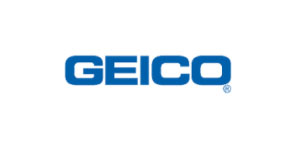Dealing with water damage can be a stressful and unfortunate situation. Whether it’s from a burst pipe, roof leak, or natural disaster, water damage can wreak havoc on your property. It’s crucial to know what not to do when facing this issue to prevent further damage and ensure effective restoration.
In this section, we will discuss essential steps to avoid escalating problems when dealing with water damage. Understanding what not to do is crucial in protecting your property and minimizing the impact of water damage.
Key Takeaways:
- Avoid delaying action when it comes to water damage repairs.
- Ignoring safety precautions can have severe consequences.
- Be cautious when attempting DIY restoration; it may lead to ineffective results.
- Identify and address the source of water damage to prevent recurring issues.
- Proper drying techniques are essential in preventing mold and mildew growth.
Delaying Action
When it comes to water damage, delaying repairs can have severe consequences. Acting promptly is crucial in minimizing further damage and ensuring effective restoration. Ignoring the need for immediate response can lead to costly repairs, health hazards, and diminished property value.
One of the primary risks of delaying water damage repairs is the potential for mold growth. Standing water and excess moisture create the perfect breeding ground for mold and mildew, which can spread quickly throughout your property.
Immediate response to water damage is essential to prevent:
- Structural damage to your property
- Worsening of the water damage
- Increased risk of mold and mildew growth
- Health hazards, such as respiratory issues and allergies
By addressing the water damage promptly, you can mitigate these risks and protect both your property and your health. It is crucial to recognize that water damage is not only confined to visible areas but can also seep into walls, floors, and other hidden spaces.
Without an immediate response, the damage can extend beyond what is initially apparent, causing further deterioration of structural elements and increasing repair costs. Additionally, prolonged exposure to water can weaken the integrity of building materials, potentially compromising the safety of your property.
For a clear understanding of the consequences of delayed action, refer to the table below:
| Consequences of Delaying Water Damage Repairs | Immediate Response to Water Damage |
|---|---|
| Increased risk of mold and mildew growth | Timely mitigation and restoration |
| Structural damage to the property | Prevention of further deterioration |
| Health hazards for occupants | Minimization of health risks |
| Higher repair costs | Cost-effective restoration |
As you can see, swift action in response to water damage is crucial in avoiding these detrimental consequences. By delaying repairs, you not only put your property at risk but also compromise the well-being of those living or working within it.
Ignoring Safety Precautions
When dealing with water damage, it is crucial to prioritize safety measures to protect yourself and others. Failing to take proper precautions can result in serious consequences and further complicate the restoration process. This section will highlight essential safety measures that you should follow to ensure your well-being during water damage restoration.
Avoid Electrical Hazards
One of the primary concerns when dealing with water damage is the risk of electrical hazards. Water can conduct electricity, making it extremely dangerous to come into contact with exposed wires or electrical appliances in a water-damaged area. To stay safe, follow these guidelines:
- Turn off the power supply to the affected area before entering.
- Avoid touching electrical outlets, switches, or appliances if you are standing in water or if the area is wet.
- If you are unsure about the safety of the electrical system, contact a licensed electrician to assess the situation before proceeding with any restoration work.
By taking these precautionary measures, you can significantly reduce the risk of electrical accidents and safeguard yourself and others involved in the restoration process.
Prevent Mold Growth
Mold growth is a common risk associated with water damage. It can occur within 24-48 hours after water intrusion if not properly addressed. To prevent the growth and spread of mold, follow these preventive measures:
- Ensure proper ventilation by opening windows and using fans or dehumidifiers to remove excess moisture from the affected area.
- Remove water-damaged materials and belongings promptly to prevent mold spores from spreading.
- Wear protective gear such as gloves, goggles, and masks when handling mold-contaminated items to avoid inhaling airborne spores.
- Thoroughly dry affected areas and maintain low humidity levels to discourage mold growth.
By implementing these safety measures, you can mitigate the risk of mold growth and create a safer environment for the restoration process.
| Safety Measures for Water Damage | Electrical Hazards | Mold Growth Risks |
|---|---|---|
| Avoid contact with exposed electrical wires or outlets | Turn off power supply to the affected area | Ensure proper ventilation to prevent excess moisture |
| Contact a licensed electrician if unsure about electrical safety | Avoid touching electrical switches or appliances in wet areas | Promptly remove water-damaged materials to prevent mold spread |
| Wear protective gear when handling mold-contaminated items | ||
| Dry affected areas thoroughly and maintain low humidity levels |
DIY Restoration Mistakes
While it may be tempting to tackle water damage restoration on your own, it’s important to be aware of common DIY mistakes that can worsen the situation. Ineffective restoration attempts can lead to further damage and costly repairs. Knowing when to hire professionals is crucial for a successful restoration process. Let’s explore some common DIY water damage mistakes and when it’s best to seek professional assistance.
- Using inadequate drying methods: Simply wiping or air-drying the affected area may not be enough to remove all the moisture. This can result in hidden pockets of moisture that lead to mold growth and structural damage. Hiring professionals who have the proper equipment and expertise ensures thorough drying.
- Delaying the restoration process: Time is of the essence when dealing with water damage. Delaying repairs can allow the water to seep deeper into the building materials, causing more extensive damage and increasing the risk of mold growth. It’s crucial to act promptly to minimize the impact.
- Ignoring safety precautions: Water damage restoration often involves contact with contaminated water and potential hazards like electrical systems. Without proper safety measures, you put yourself at risk. Professionals are trained to handle these situations safely, ensuring your well-being throughout the restoration process.
- Using incorrect cleaning solutions: Different types of water damage require specific cleaning solutions and techniques. Using the wrong products can further damage materials or fail to adequately sanitize the affected area. Professionals have the knowledge and resources to use the appropriate cleaning agents for effective restoration.
While these are just a few examples of common DIY mistakes, it’s essential to understand that each water damage situation is unique. Assessing the extent of the damage, the water source, and the affected materials is crucial in determining whether you can handle the restoration yourself or if it’s best to enlist the help of professionals.
| Common DIY Water Damage Mistakes | When to Hire Professionals |
|---|---|
| Using inadequate drying methods | Extensive water damage or hard-to-reach areas |
| Delaying the restoration process | Large-scale flooding or sewage backup |
| Ignoring safety precautions | Electrical hazards or contaminated water |
| Using incorrect cleaning solutions | Mold growth or potential health risks |
Failing to Identify the Source
One of the most critical steps in effectively addressing water damage is identifying the source. Failure to pinpoint the origin of the water intrusion can result in recurring issues and incomplete restoration. To ensure successful restoration and prevent future damage, it is crucial to find and address common sources of water damage such as plumbing issues and roof leaks.
To locate the source of water damage caused by plumbing issues, start by inspecting visible pipes and fixtures for any signs of leaks. Look for dripping faucets, water stains, or pooling water around fixtures like sinks, toilets, and showerheads. Carefully check the area under sinks and around water-connected appliances like dishwashers and washing machines. In some cases, hidden leaks within the walls or flooring may require the assistance of a professional plumber to pinpoint the problem accurately.
Roof leaks, another common source of water damage, can cause significant issues if left unattended. Check for water stains on the ceilings, walls, or attic space. Pay attention to signs of water intrusion after heavy rainfall or when snow begins to melt. Inspect the roof for missing or damaged shingles, deteriorated flashing, or clogged gutters that may lead to water seepage. It’s essential to address roof leaks promptly to prevent further damage to the structure of your home and potential mold growth.
By identifying and addressing the source of water damage, you can effectively mitigate the risk of recurring problems and ensure a successful restoration process. Promptly fixing plumbing issues or repairing roof leaks can save you time, money, and potential headaches down the line. Take the necessary steps to locate and resolve these common sources of water damage to protect your property and maintain a safe living environment.
Neglecting Proper Drying Techniques
Proper drying is crucial for successful water damage restoration. When water seeps into your property, it can leave behind residual moisture that, if not adequately eliminated, can lead to mold and mildew growth. Neglecting this critical step can have severe consequences for both your property and your health.
Drying the affected areas thoroughly is essential to prevent the growth of mold, which can cause allergies, respiratory issues, and damage to your property. Mold thrives in moist environments, and even a small amount of residual moisture can provide the perfect breeding ground.
To prevent mold and mildew growth, follow these tips when drying your property after water damage:
- Use dehumidifiers to remove excess moisture from the air.
- Ensure proper ventilation by opening windows and using fans.
- Use absorbent materials like towels, mops, or sponges to dry surfaces.
- Remove any wet carpeting, upholstery, or bedding.
- Consider using professional drying equipment if necessary.
By diligently following these techniques and removing all residual moisture, you can significantly reduce the risk of mold and mildew growth, protecting both your property and your health.
| Consequences of Neglecting Proper Drying Techniques | Preventing Mold and Mildew Growth |
|---|---|
|
|
Mishandling Damaged Belongings
When it comes to water damage, handling your belongings correctly is crucial to the restoration process. Mishandling water-damaged items can lead to irreversible damage, making it essential to follow the right steps for salvaging and cleaning.
Salvaging Water-Damaged Items
Do:
- Remove items from the affected area as soon as it is safe to do so.
- Rinse off mud and debris from items with clean water.
- If possible, separate wet items to prevent further damage and promote drying.
- Use fans or dehumidifiers to aid in the drying process.
Don’t:
- Wait too long to salvage your belongings, as mold and mildew can develop quickly.
- Use a regular vacuum cleaner to remove water from fabrics or upholstery, as it can cause more damage.
- Agitate or scrub water-damaged items vigorously, as it can further harm delicate materials.
- Overlook professional assistance for valuable or sentimental items that require specialized care.
Contents Cleaning
Once your belongings have been salvaged, thorough cleaning is necessary to remove any contaminants and prevent further damage. Here are some do’s and don’ts when it comes to cleaning water-damaged items:
Do:
- Wear gloves and protective equipment to avoid exposure to harmful substances.
- Follow manufacturer instructions on cleaning products and solutions.
- Clean hard surfaces with a mild detergent or disinfectant.
- Consider professional contents cleaning services for delicate or valuable items.
Don’t:
- Use bleach or other harsh chemicals on delicate or porous materials.
- Place wet items in sealed containers or plastic bags, as it can promote mold growth.
- Expose yourself to mold or contaminated materials without proper protective gear.
- Ignore the signs of irreparable damage and attempt to salvage beyond repair.
To visualize the process of salvaging water-damaged items and contents cleaning, refer to the following table:
| Item | Salvage Steps | Cleaning Instructions |
|---|---|---|
| Clothing | Rinse with clean water. Separate by color. | Wash with appropriate detergent. |
| Electronics | Power off immediately. Remove batteries if possible. | Clean with isopropyl alcohol or electronics-specific cleaning solution. |
| Furniture | Remove from water, separate cushions if applicable. | Clean with mild detergent or upholstery cleaner. |
| Documents | Separate and air dry. | Consult a professional document restoration service. |
| Art and Antiques | Handle with care. Contact a professional restoration specialist. | Consult an art conservation expert. |
Conclusion
In conclusion, understanding and avoiding common mistakes when dealing with water damage is essential for protecting your property and minimizing the impact. By following the recommended steps and knowing what not to do, you can effectively mitigate further damage and ensure successful restoration.
First and foremost, it is crucial to take immediate action when facing water damage. Delaying repairs can lead to significant consequences, including structural damage and mold growth. Promptly addressing the issue can help prevent further complications and reduce the overall cost of restoration.
Additionally, prioritizing safety is of utmost importance during the water damage restoration process. Ignoring safety precautions can result in electrical hazards and health risks associated with mold and bacteria. It is essential to wear protective gear, turn off the electricity, and seek professional assistance when necessary to ensure the well-being of everyone involved.
Finally, recognizing the limitations of do-it-yourself (DIY) restoration and knowing when to seek professional help can make a substantial difference in the outcome. DIY attempts can often be ineffective, leading to more damage and costly repairs. It is crucial to understand when professional expertise is needed to ensure proper restoration and salvage of your property and belongings.
FAQ
What are some common water damage mistakes to avoid?
Some common water damage mistakes to avoid include delaying repairs, ignoring safety precautions, attempting DIY restoration without proper knowledge, failing to identify the source of the water damage, neglecting proper drying techniques, and mishandling damaged belongings.
Why is delaying action after water damage a mistake?
Delaying action after water damage can lead to further issues and more extensive damage. Immediate response and prompt repairs are crucial in preventing the spread of water and minimizing the impact on your property.
What safety precautions should I take when dealing with water damage?
When dealing with water damage, it is important to prioritize safety. Some safety precautions to consider include turning off the electricity in affected areas, wearing protective gear like gloves and masks, and ensuring proper ventilation to prevent mold growth.
Are there any risks associated with DIY water damage restoration?
Yes, there are risks associated with DIY water damage restoration. Without proper knowledge and equipment, DIY attempts can lead to further damage and may not effectively address the root cause of the water damage. It is advisable to seek professional help for efficient and reliable restoration.
How can I identify the source of water damage?
To identify the source of water damage, inspect areas such as plumbing fixtures, pipes, and roofs for any leaks or signs of damage. It is important to address the source to prevent recurring issues and ensure effective restoration.
Why is proper drying important in water damage restoration?
Proper drying is crucial in water damage restoration as residual moisture can lead to mold and mildew growth. Thoroughly drying the affected areas and using specialized equipment helps prevent these issues and ensures a successful restoration process.
How should I handle water-damaged belongings?
When handling water-damaged belongings, it is important to follow proper protocols. Avoid using heat or direct sunlight for drying, as it can cause further damage. Instead, consult professionals specializing in contents cleaning and restoration to salvage your belongings effectively.
















